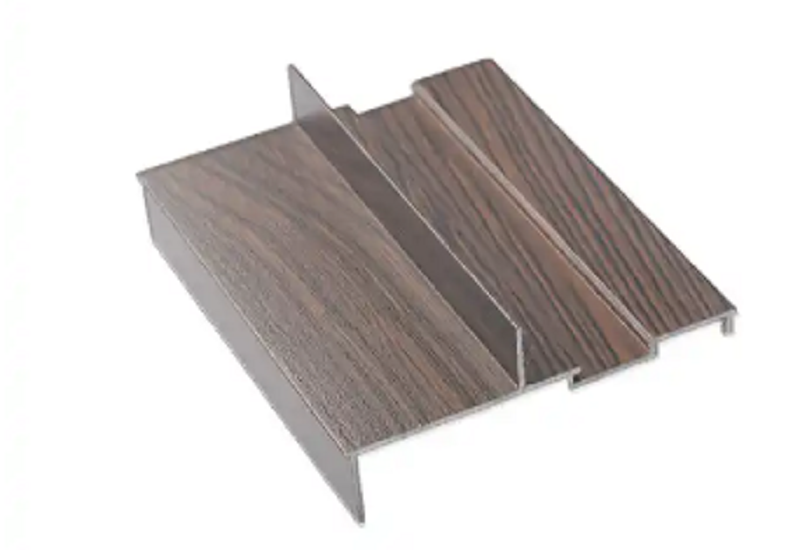English 




Views: 0 Author: Site Editor Publish Time: 2023-04-07 Origin: Site



Aluminum extrusions are used to make various structures and equipment. They are employed in different industries to provide sturdy, durable, corrosion-resistant tools. Technicians use different methods to connect aluminum extrusions depending on the kind of joint needed.

Aluminum extrusions can be joined using different methods. The connections can be permanent, non-permanent, and semi-permanent.
Different methods are used to connect aluminum extrusions permanently. They include welding and brazing. Welding involves heat that melts base materials, connecting them. Welding can be done using a laser, electron beam, or electric arc.
On the other hand, brazing uses molten filler material heated at a high temperature. The melted filler is added to aluminum extrusions and connects them when it solidifies.
Interlocking connections do not need bonding or fasteners. Two extrusions are rotated into position to create the stipulated structure. In other scenarios, one extrusion slides over another. An interlocking joint is solid, and disassembling is easy by turning the extrusions in the opposite direction.
Additional components can be added to interlocking joints to ensure they do not come apart accidentally.
Snap-fit joints provide more permanent connections. Aluminum profiles being connected slide together into a locked position, which tends to be hard to disassemble. Making this connection is easy and can also be used to conceal screw heads, making a product’s exterior visually appealing. A snap-fit link can also be called a snap-lock joint.
Aluminum extrusions can also be joined using screws and nut tracks. Screw ports can use machine and self-tapping screws to create a sturdy connection. The joint is also simple to disassemble, allowing changes and corrections. As for nut tracks, a channel is created for a bolt or nut to create a solid connection. Several fasteners can be used in one nut track.
Many aluminum structures have corners. A corner cleat allows experts to join two similar extrusions at an angle. The extrusion has a channel that holds a cleat made of aluminum or sheet steel. When you need to join extrusions end to end, end joints are required. Channels are made at the end of extrusions to allow seamless connections.
Other ways to connect aluminum extrusions include hinge and flat joints. A hinge connection keeps extrusions aligned while allowing limited rotation. With flat joints, extrusions are joined without any mating surfaces. Types of flat joints include tee, edge, and lap connections.
Experts help connect aluminum extrusions, creating sturdy, well-made products. Weiye deals with aluminum extrusions and can help you connect different aluminum extrusions expertly. Here is why you should consider Weiye for joining aluminum extrusions.
Quality customer support: Weiye offers responsive customer service to ensure clients get the help they need. Itis quick and professional for a smooth process. Whether you need to order products or clarification, reach out and get the assistance you need.
Aluminum extrusions are vital in many industries. They are used to make different structures, simple and complex. The extrusions can be joined permanently or non-permanently using different methods.
Welding and brazing create permanent joints. Interlocking joints are simple to disassemble, while snap-fit joints are locked into position and are hard to take apart. Screw ports and nut tracks are also used in connecting aluminum extrusions.
It is prudent to let experts connect extrusions for you if you lack the skills. Ensure you go for a company that offers high-quality products and uses modern technology and tools to connect extrusions.
Top Aluminum Furnitures Manufacturers and Suppliers in Czech Republic
Top Aluminum Furnitures Manufacturers and Suppliers in Poland
Top Aluminum Furnitures Manufacturers and Suppliers in Belgium
Top Aluminum Furnitures Manufacturers and Suppliers in Finland
Top Aluminum Furnitures Manufacturers and Suppliers in Denmark
Top Aluminum Furnitures Manufacturers and Suppliers in Greece
Top Aluminum Furnitures Manufacturers and Suppliers in Portugal
Top Aluminum Furnitures Manufacturers and Suppliers in Austria
Top Aluminum Furnitures Manufacturers and Suppliers in Norway
Top Aluminum Furnitures Manufacturers and Suppliers in Sweden
